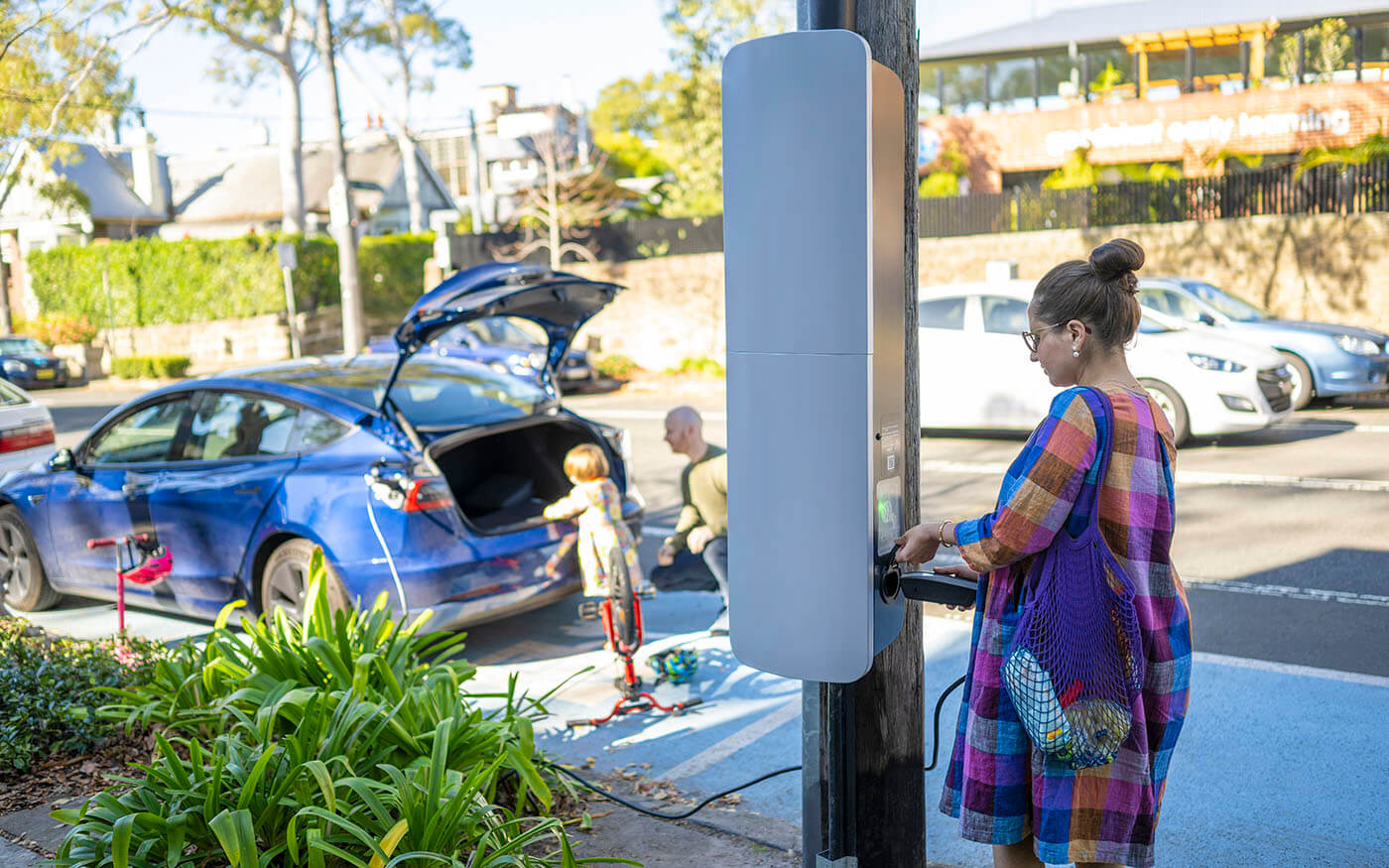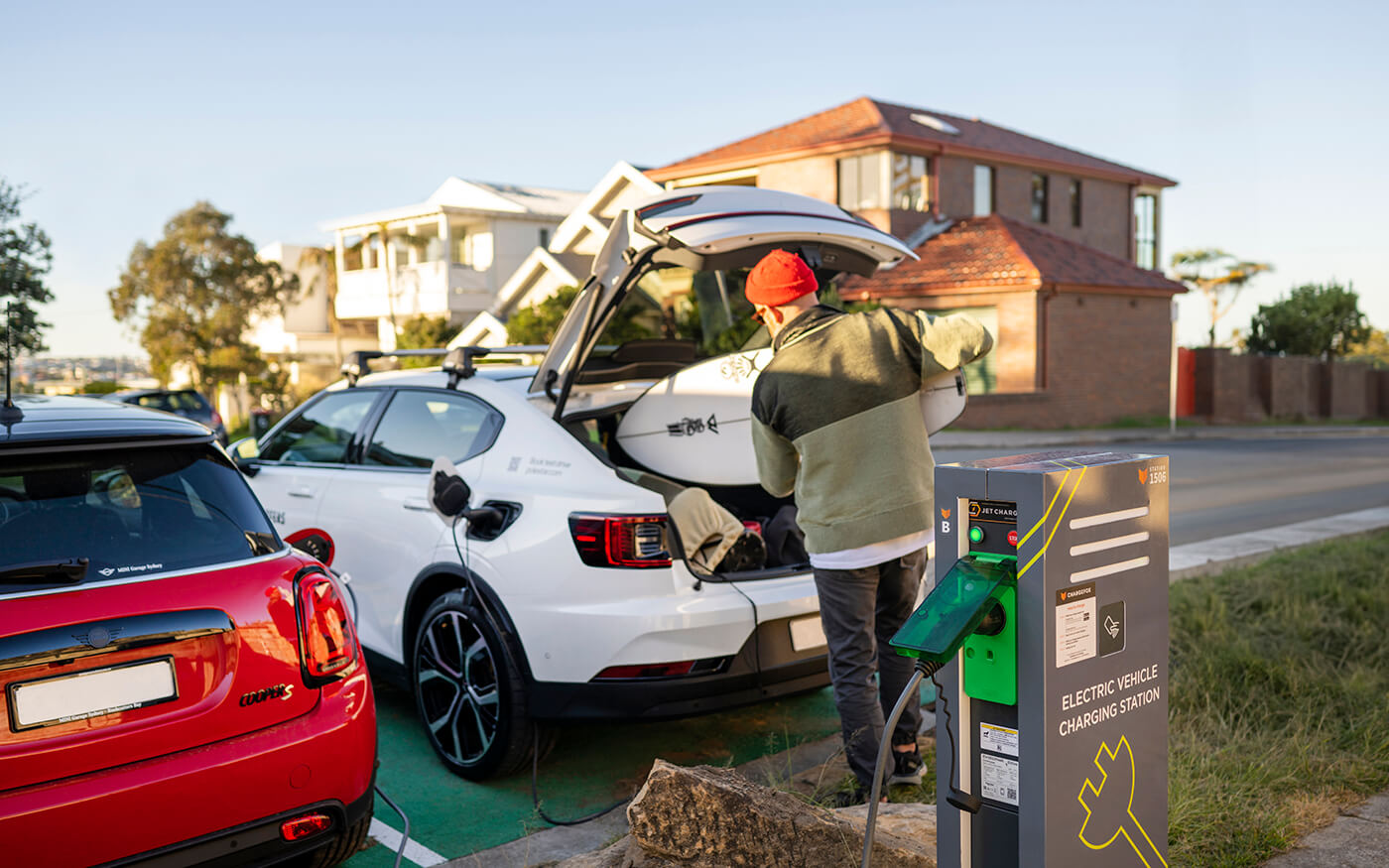Key information
- Applications for round 2 are now closed.
Resources for applicants
- Round 2 guidelines (new version updated on 23 July 2024)
- Round 2 kerbside map
- Round 2 funding agreement (new version updated on 22 July 2024)
- Round 2 application portal
- Frequently asked questions
Electric vehicle kerbside charging grants
We know most electric vehicle (EV) charging will be done at home. However, approximately 1 in 3 drivers across NSW do not have access to off-street parking to charge an EV.
That’s why we’re investing $10 million across multiple funding rounds to install EV kerbside chargers in areas of NSW with the least access to private, off-street parking.
Round 2 information sessions
- Electric vehicle kerbside charging round 2 launch information session
- Electric vehicle kerbside charging round 2 council information session
Benefits of kerbside charging
- residents will be satisfied knowing they have access to essential charging options
- supports our progress towards achieving your net zero and sustainability goals
- community adoption of EVs will increase
- you'll secure your reputation as a leading local government.
- access to convenient public charging options
- gain newer, more efficient transportation options
- reduce transport costs
- attract EV drivers to spend time and money at local businesses
- improve local air quality.
As you work to increase your presence in the NSW network, the kerbside charging grants will help you:
- improve commercial viability of kerbside charging installations through co-funding
- become an industry leader
- gain first mover advantage.
Read how these councils are leading the way with public EV charging infrastructure
About the grant
1. What was on offer?
The NSW Government made $4.5 million in funding available for round 2 with up to $800,000 per applicant.
Funding was to be no more than 80% of the total installation and equipment cost for each requested EV charger, capped depending on their priority zone tier outlined in the kerbside charging map section.
2. Who could apply?
Funding in round 2 was open to charge point operators that are either:
- an entity incorporated under the Corporations Act 2001 (Cth); or
- a state-owned corporation or subsidiary of an Australian state or territory owned corporation
3. The guidelines
To understand the changes in round 2 make sure you read:
You can find the full details around the grant and eligibility in the funding guidelines. Please read the guidelines in full to understand all requirements and how they relate to your application.
4. Kerbside Charging Map
To ensure equitable distribution across areas of highest need for kerbside chargers, 3 priority zone types are shown on the map. These have been identified based on population density, housing type, housing tenure and vehicle ownership and attract different NSW government co-funding amounts as shown in the table below.
| Priority zone tier | Description | Co-funding cap |
|---|---|---|
| Green | Areas where the most NSW Government co-funding support is needed | $10,000 (ex GST) per charge port |
| Yellow | Areas where moderate NSW Government co-funding support is needed | $8,000 (ex GST) per charge port |
| Blue | Areas where less NSW Government co-funding support is needed | $6,000 (ex GST) per charge port |
All chargers must be installed in these zones. The list of eligible zones may be reviewed and modified for subsequent funding rounds to ensure program objectives continue to be met.
5. Funding agreement
Successful applicants will be required to execute the funding agreement prior to any co-funding payments being made.
Round 1 results
To date, we have allocated $4.1 million towards the installation of 671 charge ports across 391 sites in 16 local government areas (LGAs).
All chargers will be powered by 100% renewable electricity and will be available to the public 24 hours per day, 7 days per week.
Resources for councils
Councils will play an integral role in the deployment of public, kerbside chargers. Below are resources which councils may find useful when engaging with CPOs.
- EV public charging opportunities for local government
- EV kerbside charging guide for local government
- State Environment Planning Pathways (SEPP) – webinar and factsheet
- Template letter of support
Navigating EV Charging Licence Agreements
Stay up to date
If you wish to also receive updates on EVs and other NSW Government EV initiatives, fill in your details below.

